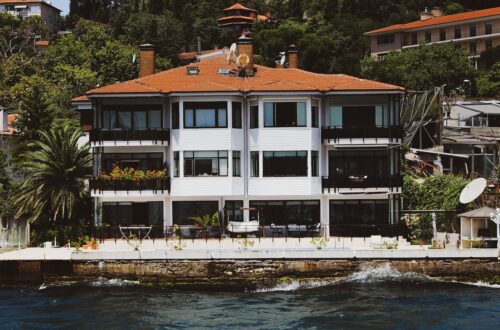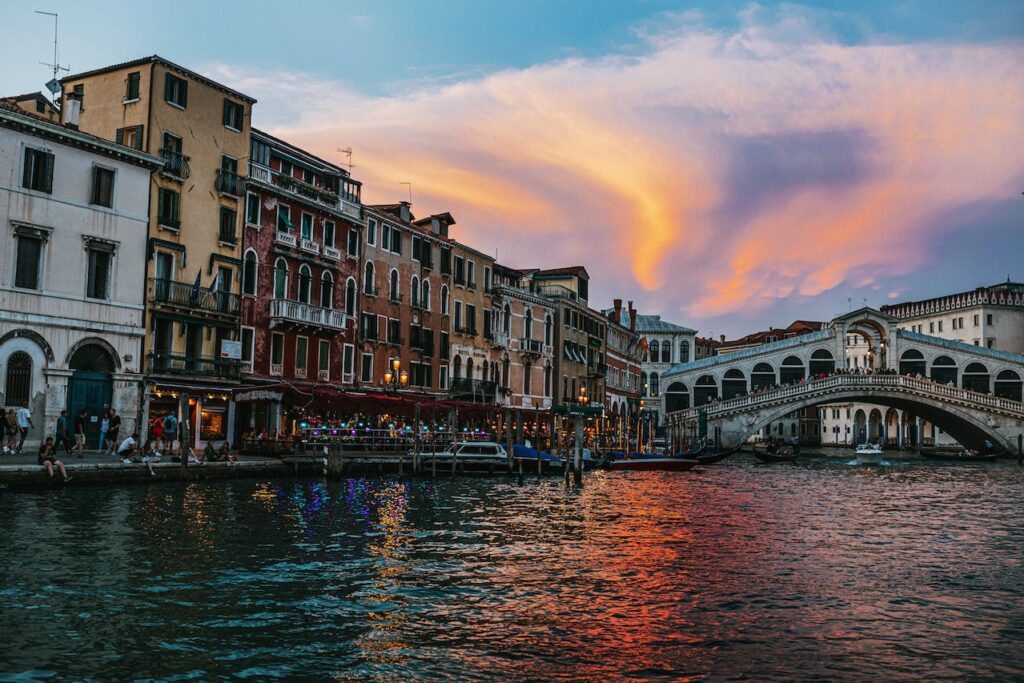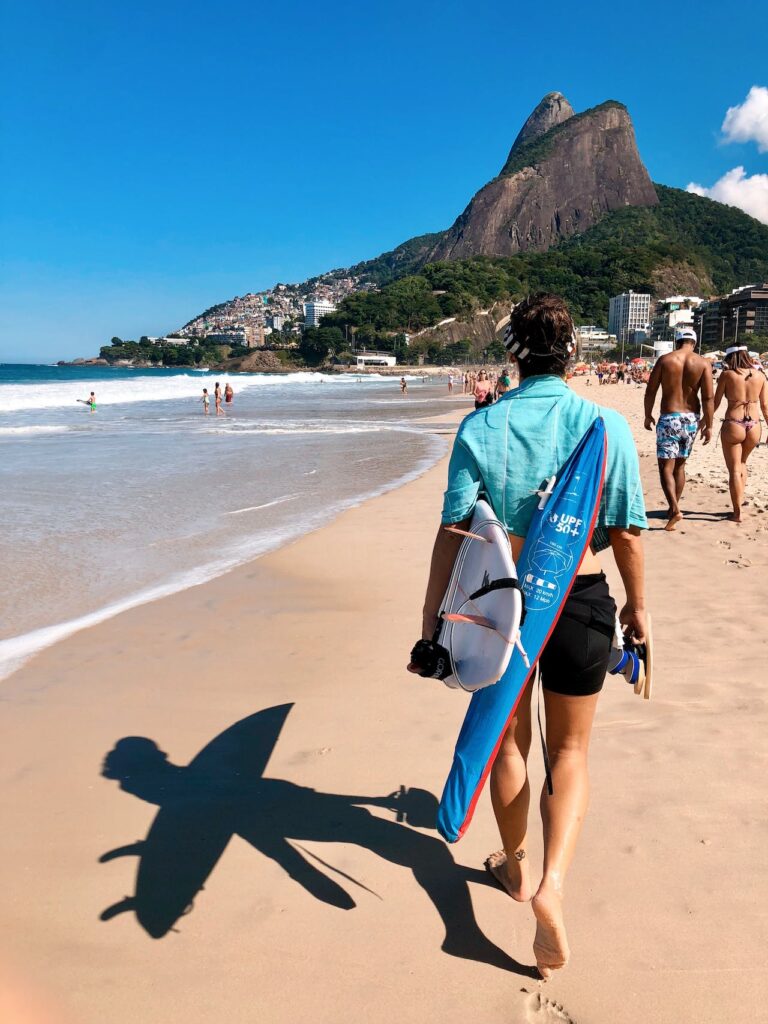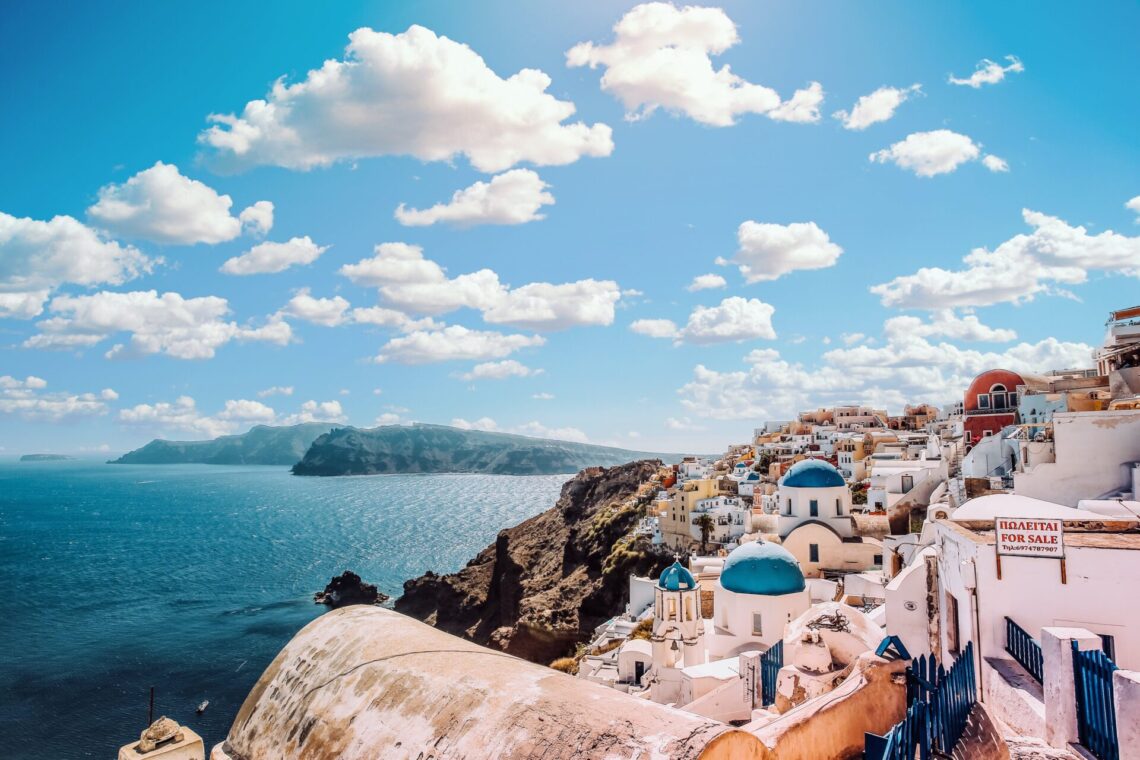
Top 10 Travel-Worthy Destinations To Beat The Heat
As the days grow longer and the sun graces us with its warm embrace, it’s that time of the year when summer vibes and vacation dreams come to life. Summer travel is a cherished tradition for many, offering the perfect opportunity to escape the routine and embrace the warmth of the season. As travelers, we seek the harmony of scenic beauty, the thrill of unique adventures, and the embrace of rich traditions.
Whether you’re a beach enthusiast, a mountain lover, or a city explorer, the world is filled with enticing destinations to make your summer unforgettable. In this blog, we’ll explore the top 10 travel-worthy summer destinations that promise not only respite from the heat but also a wealth of experiences.
Picking the Travel-Worthy” Destinations: Criteria for Selection
Choosing the ideal summer destination requires careful consideration of various factors to ensure a memorable and enjoyable experience. Here are some criteria to help you select the cream of the crop for your sun-soaked adventure:
Weather Delight: A quintessential summer destination should offer a warm and inviting climate. Whether it’s basking in the sun on a sandy shore or exploring charming streets under clear skies, the weather plays a pivotal role in creating a memorable travel experience.
Scenic Beauty: The cream of the crop destinations boasts stunning landscapes, from azure coastlines and lush greenery to majestic mountains and captivating cityscapes. We prioritize places that captivate the eyes and provide a feast for the senses.
Cultural Riches: Immersing oneself in local culture adds depth to any travel experience. Our selected destinations are rich in cultural heritage, offering unique traditions, delicious cuisines, and a vibrant atmosphere that reflects the heart and soul of the region.
Activities Galore: Whether you’re an adrenaline junkie, a culture enthusiast, or a relaxation seeker, our chosen destinations cater to diverse interests. From thrilling water sports and hiking trails to cultural events and serene retreats, there’s something for everyone.
Accessibility: Easy access is key to a stress-free vacation. We prioritize destinations with convenient transportation options, ensuring that travelers can reach their sun-soaked paradise without unnecessary hurdles.
Safety and Hospitality: The well-being of our travelers is paramount. Our selected destinations prioritize safety, boasting low crime rates and welcoming locals who enhance the overall travel experience through warm hospitality.
This summer, take a journey that reflects the spirit of summer as we explore a curated selection of destinations that will beckon you into an extraordinary exploration of discovery and delight.
Destination 1: Santorini, Greece
Santorini is a stunning island located in the southern Aegean Sea, forming part of the Cyclades archipelago. Famous for its breathtaking landscapes, crystal-clear waters, and iconic white-washed buildings adorned with blue domes, Santorini is a dream destination for many travelers. The island is the result of a volcanic eruption that shaped its unique geography, featuring dramatic cliffs, caldera views, and charming villages.
Highlights:
- Oia Sunset: Oia, a picturesque village on the northern tip of the island, is renowned for its mesmerizing sunsets. The sun dipping below the horizon against the backdrop of white buildings and the Aegean Sea is a sight to behold.
- Akrotiri Archaeological Site: Explore the ancient ruins of Akrotiri, a Minoan Bronze Age settlement preserved in volcanic ash. The well-preserved artifacts provide a glimpse into the island’s rich history.
- Red Beach: Visit the striking Red Beach, known for its red-hued cliffs and sand. It’s a great spot for swimming and relaxing while surrounded by the unique geological features.
- Fira Town: Santorini’s capital, Fira, is a bustling hub with shops, restaurants, and vibrant nightlife. The town perches on the caldera cliffs, offering panoramic views and a lively atmosphere.
- Wine Tasting: Santorini is renowned for its Assyrtiko wine. Take a tour of the island’s wineries, located amidst vineyards with stunning views, and savor the local varieties.
Activities:
- Boat Tours: Explore the caldera and neighboring islands by taking a boat tour. You can discover hidden caves, swim in hot springs, and appreciate the island’s beauty from a different perspective.
- Hiking: Hike the scenic trails that lead to various viewpoints and charming villages. The Caldera Trail from Fira to Oia is a popular route offering spectacular vistas.
- Water Sports: Enjoy water activities such as snorkeling, diving, and paddleboarding in the crystal-clear waters of the Aegean Sea.
- Cultural Events: Check for local festivals, concerts, and art exhibitions happening during your visit to immerse yourself in Santorini’s vibrant cultural scene.
Best Time to Visit:
The ideal time to visit Santorini is during the late spring (April to June) and early fall (September to October) when the weather is mild, and the crowds are less overwhelming. Summer (July and August) is the peak tourist season, characterized by higher temperatures and more crowded attractions.
The winter months (November to March) are quieter, but some businesses may close, and the weather can be cooler and unpredictable.
Destination 2: Bora Bora, French Polynesia
Bora Bora is a tropical paradise located in the South Pacific, part of the Society Islands in French Polynesia. Renowned for its stunning overwater bungalows, turquoise lagoon, and lush mountainous landscapes, Bora Bora is a dream destination for honeymooners, luxury travelers, and those seeking a romantic and idyllic escape.
Highlights:
- Mount Otemanu: This extinct volcano, the highest point on the island, offers breathtaking panoramic views of the surrounding lagoon and is a popular hiking destination for those seeking adventure.
- Overwater Bungalows: Bora Bora is synonymous with luxury overwater bungalows. Many resorts offer these exclusive accommodations with direct access to the crystal-clear lagoon, providing an unparalleled and intimate experience.
- Matira Beach: Often considered one of the most beautiful beaches in the world, Matira Beach boasts soft white sand, palm-fringed shores, and shallow, warm waters ideal for swimming and snorkeling.
- Coral Gardens: Explore the vibrant underwater world of Bora Bora by snorkeling or diving in the coral gardens. Encounter colorful marine life, including tropical fish, rays, and sometimes even sharks.
- Shark and Ray Feeding Excursions: Join guided boat tours to feed and swim with blacktip reef sharks and stingrays in their natural habitat, creating unforgettable and thrilling memories.
Activities:
- Water Sports: Engage in a variety of water activities, including paddleboarding, kayaking, jet skiing, and kiteboarding in the calm and clear lagoon.
- Island Tours: Discover the local culture and natural beauty by taking a 4×4 island tour. Visit historical sites, learn about the island’s flora and fauna, and enjoy stunning viewpoints.
- Polynesian Spa Experience: Pamper yourself with a traditional Polynesian spa treatment, often incorporating local ingredients and ancient techniques for a truly relaxing experience.
- Romantic Sunset Cruises: Enjoy a romantic evening on the water with a sunset cruise, often featuring a Polynesian dinner and breathtaking views of the sun setting behind Mount Otemanu.
- Helicopter Tours: Gain a unique perspective of Bora Bora’s beauty with a helicopter tour. Marvel at the coral reefs, lush landscapes, and the iconic overwater bungalows from above.
Best Time to Visit:
The best time to visit Bora Bora is during the dry season, which occurs from May to October. This period offers pleasant temperatures, lower humidity, and minimal rainfall, providing ideal conditions for outdoor activities and water sports. However, keep in mind that this is the high season, so prices may be higher, and there could be more tourists.
If you prefer fewer crowds, you might consider the shoulder seasons of April and November when the weather is still favorable, and prices may be more reasonable.
Destination 3: Bali, Indonesia
Bali, often referred to as the “Island of the Gods,” is a picturesque Indonesian island known for its rich cultural heritage, lush landscapes, vibrant arts scene, and stunning beaches. From ancient temples and vibrant markets to lush rice terraces and lively nightlife, Bali offers a diverse range of experiences for travelers seeking both relaxation and adventure.
Highlights:
- Tanah Lot Temple: Perched on a rock formation in the sea, Tanah Lot is one of Bali’s most iconic temples, offering breathtaking sunset views. The temple is a significant pilgrimage site and a symbol of Balinese spirituality.
- Ubud: Known as the cultural heart of Bali, Ubud is a charming town surrounded by lush rice terraces and home to art galleries, traditional dance performances, and the famous Sacred Monkey Forest Sanctuary.
- Tegallalang Rice Terraces: These stunning terraced landscapes near Ubud showcase the island’s traditional Subak irrigation system. The lush green fields create a picturesque scene that is both culturally and aesthetically significant.
- Uluwatu Temple: Perched on a cliff top overlooking the Indian Ocean, Uluwatu Temple is renowned for its traditional Kecak dance performances and panoramic views. It’s a perfect spot to witness a sunset performance.
- Kuta Beach: A popular destination for surfers, Kuta Beach is known for its lively atmosphere, vibrant nightlife, and long stretches of golden sand. It’s a great place for both water activities and leisure.
Activities:
- Surfing: Bali is a renowned surfing destination, and beaches like Uluwatu, Kuta, and Seminyak attract surfers of all levels. Numerous surf schools offer lessons for beginners.
- Snorkeling and Diving: Explore Bali’s vibrant underwater world by snorkeling or diving in locations like Menjangan Island, Amed, and Nusa Penida, where you can encounter diverse marine life and colorful coral reefs.
- Balinese Cooking Classes: Immerse yourself in the local culture by taking a cooking class. Learn to prepare traditional Balinese dishes using fresh and aromatic ingredients.
- Water Temples: Visit Bali’s famous water temples, such as Tirta Empul and Pura Ulun Danu Bratan, where you can witness traditional ceremonies and enjoy serene surroundings.
- Shopping in Ubud Market: Experience the vibrant colors and craftsmanship of Balinese arts and crafts by exploring the bustling Ubud Market. Purchase handmade souvenirs, textiles, and traditional Balinese artwork.
Best Time to Visit:
The best time to visit Bali is during the dry season, which runs from April to October. During these months, you can expect sunny weather, lower humidity, and minimal rainfall, providing ideal conditions for outdoor activities.
The peak tourist season is from July to August, so if you prefer fewer crowds, consider visiting during the shoulder seasons of April to June or September to October. However, even during the wet season (November to March), Bali retains its lush beauty, and rain showers are typically short-lived.
Destination 4: Amalfi Coast, Italy
The Amalfi Coast, located in the Campania region of southern Italy, is a stunning stretch of coastline along the Tyrrhenian Sea. Known for its picturesque cliffside villages, vibrant colors, and Mediterranean charm, the Amalfi Coast is a UNESCO World Heritage Site that offers a perfect blend of natural beauty and cultural richness.
Highlights:
- Positano: This iconic village is known for its pastel-colored buildings stacked on the cliffs, narrow streets, and beautiful beaches. The Church of Santa Maria Assunta, with its distinctive dome, is a must-visit.
- Amalfi: The namesake of the coast, Amalfi is a historic town with a beautiful cathedral, the Duomo di Sant’Andrea, and charming piazzas. Explore the town’s medieval architecture and enjoy local seafood.
- Ravello: Perched high above the coastline, Ravello offers breathtaking views of the sea. Visit the Villa Rufolo and Villa Cimbrone with their stunning gardens and terraces.
- Path of the Gods (Sentiero degli Dei): Hike the scenic trail known as the Path of the Gods, offering panoramic views of the coastline, cliffs, and the Gulf of Salerno.
- Capri: While not on the Amalfi Coast itself, the nearby island of Capri is easily accessible and is a glamorous destination known for its Blue Grotto, luxury shopping, and the scenic Piazzetta.
Activities:
- Boat Tours: Explore the coastline from the sea by taking a boat tour. This allows you to see the cliffside villages from a unique perspective and discover hidden coves and grottoes.
- Lemon Groves and Limoncello Tasting: The Amalfi Coast is famous for its lemons. Visit a local lemon grove to learn about lemon cultivation and enjoy tasting Limoncello, a traditional Italian lemon liqueur.
- Beach Time: Relax on the beautiful beaches of the Amalfi Coast, such as Spiaggia Grande in Positano or Marina Grande in Amalfi. Enjoy the Mediterranean sun and clear blue waters.
- Local Cuisine: Indulge in the delicious regional cuisine. Try seafood dishes, fresh pasta, and the local specialty, “sfogliatella,” a pastry filled with sweet ricotta.
- Ceramics Shopping in Vietri sul Mare: Explore the town of Vietri sul Mare, known for its vibrant ceramic shops. Purchase handmade ceramics, from colorful tiles to intricate pottery.
Best Time to Visit:
The best time to visit the Amalfi Coast is during the late spring (May to June) and early fall (September to October). During these months, the weather is pleasant, and the tourist crowds are not as overwhelming as in the peak summer season.
The summer months (July and August) are the busiest, with warm temperatures and a lively atmosphere but also higher prices and crowded attractions. Winter (November to March) is less popular for beach activities, but it can be an excellent time to explore the region without the crowds, especially if you enjoy a more tranquil experience.
Destination 5: Reykjavik, Iceland
Reykjavik, the capital and largest city of Iceland, is a unique destination that combines modern urban living with a backdrop of stunning natural wonders. From vibrant street art and a lively cultural scene to the otherworldly landscapes that surround the city, Reykjavik offers a blend of urban sophistication and the raw beauty of Iceland’s natural environment.
Highlights:
- Hallgrímskirkja: This iconic church is Reykjavik’s most famous landmark, with its distinctive modernist design. Take an elevator to the top for panoramic views of the city and surrounding mountains.
- Harpa Concert Hall: A marvel of modern architecture, the Harpa Concert Hall is not only a venue for musical performances but also a visual delight with its glass façade inspired by Icelandic landscapes.
- Perlan (The Pearl): Perched on Öskjuhlíð hill, Perlan is a unique building that houses a revolving restaurant and an observation deck, providing spectacular views of Reykjavik and beyond.
- Sun Voyager: This iconic sculpture on the waterfront is a representation of a dreamboat, evoking a sense of hope and progress. It’s a popular spot for both locals and tourists, especially during sunset.
- National Museum of Iceland: Explore the rich history and cultural heritage of Iceland through exhibits featuring artifacts, manuscripts, and displays that span the Viking Age to the present day.
Activities:
- Golden Circle Tour: Take a day trip to explore Iceland’s famous Golden Circle, which includes Þingvellir National Park, Geysir geothermal area, and the powerful Gullfoss waterfall.
- Blue Lagoon: Relax in the geothermal waters of the Blue Lagoon, a world-renowned spa surrounded by lava fields. The warm, mineral-rich waters provide a unique and rejuvenating experience.
- Northern Lights Viewing: If visiting in the winter, embark on a Northern Lights tour to witness the mesmerizing auroras dancing across the Icelandic night sky.
- Whale Watching: Join a whale watching excursion from Reykjavik’s harbor to see whales, dolphins, and seabirds in the waters surrounding Iceland.
- Culinary Exploration: Reykjavik has a burgeoning food scene. Try traditional Icelandic dishes such as fermented shark, lamb stew, and skyr, or explore the city’s diverse range of international cuisine.
Best Time to Visit:
The best time to visit Reykjavik depends on your preferences and the experiences you seek. The summer months (June to August) offer milder temperatures, longer days, and the chance to explore the highlands. However, this is also the peak tourist season. For a chance to see the Northern Lights, visit during the winter months (September to March), but be prepared for colder temperatures.
Spring (April to May) and fall (September to October) can offer a balance with fewer crowds and relatively mild weather. No matter when you visit, Reykjavik’s dynamic atmosphere and proximity to natural wonders make it a year-round destination.
Destination 6: Kyoto, Japan
Kyoto, the former imperial capital of Japan, is a city renowned for its historical significance, traditional architecture, and cultural heritage. With its well-preserved temples, gardens, and traditional tea houses, Kyoto offers a glimpse into Japan’s past while also embracing modernity. From cherry blossoms in spring to vibrant fall foliage, Kyoto showcases the beauty of each season.
Highlights:
- Kinkaku-ji (Golden Pavilion): A Zen Buddhist temple covered in gold leaf, Kinkaku-ji is one of Kyoto’s most iconic landmarks. The reflection of the golden pavilion in the surrounding pond creates a mesmerizing scene.
- Fushimi Inari Taisha: Famous for its thousands of vermilion torii gates that lead up to the Fushimi Inari Shrine, this sacred site is dedicated to Inari, the Shinto god of rice and prosperity.
- Kiyomizu-dera: Perched on a hill, Kiyomizu-dera offers panoramic views of Kyoto. The wooden terrace is particularly famous, providing a stunning platform during cherry blossom season and fall foliage.
- Arashiyama Bamboo Grove: Wander through the enchanting bamboo groves of Arashiyama, a district known for its scenic beauty. The nearby Tenryu-ji Temple and the Togetsukyo Bridge add to the charm of this area.
- Gion District: Explore Gion, Kyoto’s historic geisha district, known for its traditional wooden machiya houses, and teahouses, and the chance to spot geiko (geisha) and maiko (apprentice geisha) in traditional attire.
Activities:
- Tea Ceremony Experience: Participate in a traditional Japanese tea ceremony, where you’ll learn about the art of tea preparation and the cultural significance of this ritual.
- Kimono Rental and Stroll: Rent a kimono and explore Kyoto’s historic streets dressed in traditional attire. Many rental shops offer various styles and accessories for the perfect cultural experience.
- Philosopher’s Path: Walk along the Philosopher’s Path, a canal-side path lined with hundreds of cherry trees. This is an ideal spot for cherry blossom viewing in spring.
- Nishiki Market: Immerse yourself in Kyoto’s culinary scene by visiting Nishiki Market, a lively market offering a wide array of local and traditional Japanese foods, snacks, and souvenirs.
- Ryoan-ji Zen Garden: Contemplate the minimalist beauty of the Ryoan-ji Zen Garden, known for its rock garden designed for quiet contemplation and meditation.
Best Time to Visit:
The best times to visit Kyoto are during the spring (late March to early April) for cherry blossoms and the fall (late October to early December) for vibrant autumn foliage. These seasons offer pleasant weather and showcase the city’s natural beauty. However, Kyoto is charming year-round, and each season brings its unique attractions.
If you prefer fewer crowds, consider visiting during the shoulder seasons of late spring (May) or late fall (November). Winters (December to February) are colder, but Kyoto’s temples and gardens can be enchanting in the snow.
Destination 7: Maui, Hawaii, USA
Maui, the second-largest island in the Hawaiian archipelago, is known for its diverse landscapes, including lush rainforests, volcanic craters, golden beaches, and vibrant coral reefs. Often referred to as the “Valley Isle,” Maui offers a perfect blend of natural beauty, outdoor adventures, and cultural experiences.
Highlights:
- Haleakalā National Park: Visit the Haleakalā Crater, a dormant volcano that forms the centerpiece of the national park. Witness a breathtaking sunrise from the summit and explore the otherworldly landscapes.
- Road to Hana: Embark on the famous Road to Hana, a scenic drive that winds through lush rainforests, waterfalls, and coastal cliffs. Highlights include the Seven Sacred Pools at Ohe’o Gulch and the black sand beaches.
- Waianapanapa State Park: Discover the stunning black sand beach, sea caves, and natural lava arches at Waianapanapa State Park. The contrasting colors of the dark volcanic rock and the vibrant blue ocean create a mesmerizing scene.
- Molokini Crater: Snorkel or dive at Molokini Crater, a partially submerged volcanic crater that is home to a vibrant underwater ecosystem. The crystal-clear waters offer excellent visibility for observing marine life.
- Lahaina Historic District: Explore Lahaina, a historic whaling village with charming streets, art galleries, and one of the largest banyan trees in the United States. The area is rich in history and culture.
Activities:
- Snorkeling and Diving: Maui’s waters are teeming with marine life. Besides Molokini Crater, explore coral reefs at places like Honolua Bay and Molokai’s north shore.
- Whale Watching: Visit during the winter months (December to April) for the opportunity to go whale watching. Humpback whales migrate to the warm Hawaiian waters to breed and give birth.
- Surfing and Windsurfing: Maui is a paradise for surfers and windsurfers. Head to Ho’okipa Beach for big waves and strong winds or try the gentle waves at Lahaina for beginners.
- Luau Experience: Immerse yourself in Hawaiian culture by attending a traditional luau. Enjoy a feast of local cuisine, hula dancing, and live music under the stars.
- Helicopter Tours: Witness Maui’s diverse landscapes from the air with a helicopter tour. Soar over waterfalls, lush valleys, and volcanic craters for a unique perspective.
Best Time to Visit:
The best time to visit Maui is during the shoulder seasons of spring (April to June) and fall (September to November). During these periods, the weather is pleasant, and the tourist crowds are not as overwhelming as during the peak summer and winter seasons.
Summer (July to August) is the busiest time, attracting families on vacation, while winter (December to March) is popular for whale watching. Keep in mind that Maui’s weather is generally mild and pleasant year-round, making it a great destination whenever you choose to visit.
Destination 8: Rio de Janeiro, Brazil
Rio de Janeiro, often simply called Rio, is a vibrant city known for its lively culture, iconic landmarks, and stunning natural beauty. Nestled between lush mountains and beautiful beaches, Rio is famous for its annual Carnival celebrations, samba music, and the towering Christ the Redeemer statue. The city’s unique blend of urban energy and natural wonders makes it a captivating destination for travelers.
Highlights:
- Christ the Redeemer: Perched atop Corcovado Mountain, the Christ the Redeemer statue is an iconic symbol of Rio de Janeiro. Enjoy panoramic views of the city and the bay from this UNESCO World Heritage Site.
- Copacabana Beach: One of the world’s most famous beaches, Copacabana offers a lively atmosphere with beachside vendors, water sports, and a bustling promenade. The beach is known for its vibrant energy day and night.
- Sugarloaf Mountain (Pão de Açúcar): Take a cable car to the summit of Sugarloaf Mountain for breathtaking views of Rio, including the iconic beaches, Christ the Redeemer, and the cityscape.
- Ipanema Beach: Another iconic beach, Ipanema is known for its trendy neighborhoods, diverse crowd, and vibrant nightlife. The beach inspired the famous bossa nova song “The Girl from Ipanema.”
- Tijuca National Park: Explore the lush Tijuca National Park, the largest urban rainforest in the world. Hike to waterfalls, climb Pico da Tijuca (the highest peak), and discover the diverse flora and fauna.
Activities:
Carnival: Experience the world-famous Rio Carnival, held annually before Lent. Join the vibrant parades, samba dances, and street parties that transform the city into a massive celebration of music and culture.
Samba Nightclubs: Immerse yourself in Rio’s musical heartbeat by visiting samba clubs and dance the night away to the infectious rhythms of this Brazilian genre.
Hang Gliding: Soar over the city’s stunning landscapes with a tandem hang gliding experience. Take off from the Pedra Bonita ramp and enjoy breathtaking views of the coastline.
Selarón Steps (Escadaria Selarón): Explore the colorful mosaic staircase created by artist Jorge Selarón. The steps, adorned with over 2000 brightly colored tiles from over 60 countries, connect the neighborhoods of Santa Teresa and Montserrat.
Favela Tours: Gain insights into Rio’s social and cultural diversity by taking guided tours of the city’s favelas. These tours often include visits to community projects and offer a unique perspective on local life.
Best Time to Visit:
The best time to visit Rio de Janeiro is during September to November and February to May when the weather is pleasant, and there are fewer crowds. The summer months (December to February) can be hot and crowded due to both local and international tourists. Carnival, which usually takes place in February or March, is an incredible experience but attracts large crowds.
It’s essential to plan accordingly based on your preferences, considering both weather and events. Keep in mind that Rio de Janeiro is a lively destination year-round, and each season offers its unique charm.
Destination 9:Queenstown, New Zealand:
Nestled on the shores of Lake Wakatipu and surrounded by the Southern Alps, Queenstown is a picturesque resort town on the South Island of New Zealand. Known as the “Adventure Capital of the World,” Queenstown offers stunning landscapes, outdoor activities, and a vibrant atmosphere. Whether you’re seeking adrenaline-pumping adventures or serene moments in nature, Queenstown has something for every traveler.
Highlights:
- Lake Wakatipu: The stunning glacial lake, framed by mountain ranges, is the perfect setting for water activities, scenic cruises, and lakeside strolls.
- The Remarkables: This mountain range, named for its impressive peaks, provides a dramatic backdrop to Queenstown. The Remarkables offer skiing and snowboarding in winter and hiking and mountain biking in the warmer months.
- Adventure Sports: Queenstown is renowned for its adventurous spirit. Try bungee jumping at the historic Kawarau Bridge, jet boating on the Shotover River, or paragliding for a thrilling experience.
- Glenorchy: A short scenic drive from Queenstown, Glenorchy is a charming village nestled at the head of Lake Wakatipu. The area is known for its untouched landscapes, making it a haven for nature lovers and hikers.
- Arrowtown: A historic gold mining town, Arrowtown retains its charming heritage with tree-lined streets, preserved buildings, and a Chinese settlement. It’s a great place to explore local history and enjoy a relaxed atmosphere.
Activities
- Skiing and Snowboarding: Visit during the winter months (June to August) to enjoy world-class skiing and snowboarding in the surrounding mountains, including The Remarkables and Coronet Peak.
- Milford Sound Day Trip: Take a scenic drive or a guided tour to Milford Sound, a breathtaking fjord with towering cliffs, waterfalls, and the opportunity to cruise on the serene waters.
- Hiking and Trekking: Explore the numerous hiking trails around Queenstown, ranging from easy walks along the lake to challenging treks in the nearby mountains, such as the Routeburn Track and Ben Lomond Track.
- Wine Tasting in Gibbston Valley: Discover the local wine scene by taking a wine tour in the nearby Gibbston Valley, known for its vineyards and cellar doors. Sample exquisite Central Otago wines against a stunning backdrop.
- Skyline Queenstown: Take the Skyline Gondola for panoramic views of the town, lake, and mountains. Once at the top, enjoy activities like luge rides, stargazing, and dining with a view.
Best Time to Visit
The best time to visit Queenstown depends on your preferences and the activities you want to experience. For winter sports enthusiasts, June to August offers excellent skiing and snowboarding conditions. The spring and summer months (September to February) provide pleasant weather for outdoor activities, hiking, and exploring the surrounding natural beauty.
Keep in mind that peak tourist season is during the summer, so if you prefer fewer crowds, consider visiting during the shoulder seasons of spring (September to November) or autumn (March to May). Queenstown’s landscapes are stunning year-round, and the town’s vibrant energy ensures a memorable experience whenever you choose to visit.
Destination 10: Cape Town, South Africa
Nestled between the iconic Table Mountain and the azure waters of the Atlantic Ocean, Cape Town stands as a vibrant and multicultural metropolis at the tip of the African continent. Renowned for its stunning landscapes, rich history, and diverse culture, Cape Town is a destination that seamlessly blends natural beauty with urban sophistication.
Highlights:
- Table Mountain: Towering over the city, Table Mountain is a UNESCO World Heritage Site and a symbol of Cape Town. Take a cable car or hike to the summit for panoramic views of the city, ocean, and surrounding mountains.
- Cape of Good Hope: Visit the southwesternmost point of the African continent at the Cape of Good Hope. Enjoy the breathtaking coastal scenery, encounter wildlife, and explore the historic Cape Point Lighthouse.
- Robben Island: Discover the history of South Africa by taking a ferry to Robben Island, where Nelson Mandela was imprisoned for 18 years. Guided tours provide insights into the country’s struggle against apartheid.
- V&A Waterfront: This bustling waterfront area offers a mix of shopping, dining, and entertainment. Enjoy a leisurely stroll along the harbor, visit the Two Oceans Aquarium, and explore the diverse range of shops and restaurants.
- Kirstenbosch National Botanical Garden: Immerse yourself in the beauty of Kirstenbosch, set against the eastern slopes of Table Mountain. The garden showcases indigenous flora, walking trails, and outdoor concerts.
Activities:
- Wine Tasting in Stellenbosch: Take a day trip to the nearby Stellenbosch wine region, known for its picturesque vineyards and excellent wine estates. Sample award-winning wines in a stunning natural setting.
- Cape Winelands Tour: Explore the Cape Winelands, including Franschhoek and Paarl, for a day filled with wine tastings, gourmet dining, and scenic landscapes.
- Shark Cage Diving: For thrill-seekers, shark cage diving in Gansbaai provides an opportunity to come face-to-face with the ocean’s apex predators, including great white sharks.
- Boulders Beach Penguin Colony: Visit Boulders Beach to witness a colony of African penguins. Stroll along the boardwalks and share the sandy shores with these charming and endangered birds.
- Cultural Exploration in Bo-Kaap: Explore the vibrant neighborhood of Bo-Kaap, known for its colorful houses, cobbled streets, and Cape Malay culture. Visit local markets and taste traditional Cape Malay cuisine.
Best Time to Visit:
The best time to visit Cape Town is during the late spring (September to November) and early autumn (March to May) when the weather is mild, and the city is in full bloom. Summer (December to February) offers warm temperatures, making it ideal for beach activities, but it’s also the peak tourist season.
Winter (June to August) brings cooler temperatures, occasional rainfall, and a quieter atmosphere. Consider the shoulder seasons for a balance of pleasant weather and fewer crowds.
Conclusion
These top 10 travel-worthy summer destinations offer a diverse range of experiences, from cultural immersion and historic exploration to outdoor adventures and relaxation by the sea. Whether you choose the serene landscapes of Bali, the coastal charm of the Amalfi Coast, the tropical paradise of Maui, or the captivating allure of Reykjavik, make this summer your epic saga.
So dust off your suitcase, gather your wanderlust, and let your passport be the gateway to a summer filled with exploration, joy, and adventure. The world is ready to embrace you, and each destination is a chapter waiting to be written. Share your stories, and create lasting memories. Bon voyage!


You May Also Like
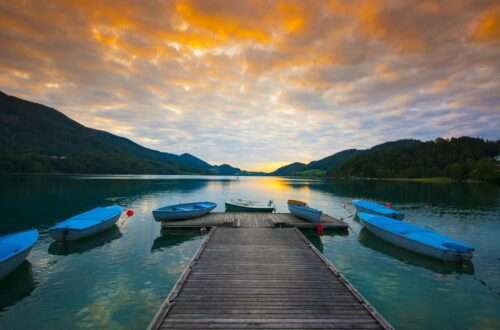
Sands of Serenity: Unveiling The 5 Best Beaches In India
3 April 2024
Top 5 Budget-Friendly Destinations for the Thrifty Traveller
28 October 2023